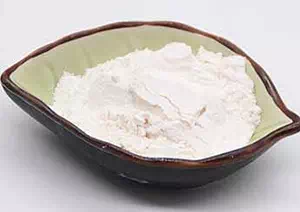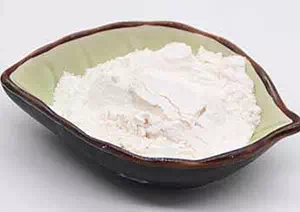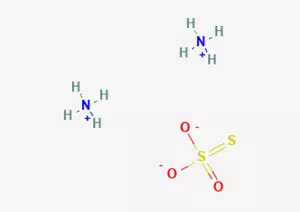All Categories



Ammonium Thiosulfate CAS 7783-18-8, Ammonium Thiosulfate, CAS 7783-18-8
Ammonium thiosulfate (CAS 7783-18-8) as a multifunctional chalcogenide.
CAS : 7783-18-8
Formula : H8N2O3S2
Mol. wt. : 148.21
EINECS : 231-982-0
| CAS | 7783-18-8 |
| Molecular formula | H8N2O3S2 |
| Molecular weight | 148.21 |
| EIENCS | 231-982-0 |
| Form | Crystalline Powder |
| Melting point | 150°C |
| boling point | / |
| Density | 1.679 g/mL at 25°C |
| Solubility | It is readily soluble in water (with a solubility of 2.15g/100ml at 20℃ and up to 103.3g/100ml at 100℃), slightly soluble in acetone, and insoluble in ethanol and ether. |
| PKA | / |
| Color | White |
| Storage temp | / |
Ammonium thiosulfate (CAS 7783-18-8) as a multifunctional chalcogenide, its core value lies in:
Industrial efficiency: Irreplaceable in the field of electroplating and fixing (the efficiency of dissolving silver halide is 30% higher than that of sodium salts).
Key agricultural intermediates: leading the synthesis of pesticides such as thiazinone;
Safety challenge: It is necessary to strictly prevent moisture and heat (decomposition temperature ≥50℃), and wear a gas mask during operation.
Chemical Name: Ammonium thiosulfate (also known as ammonium sea wave, Ammonium disulfate)
Molecular formula: (NH₄)₂S₂O₃ or H₈N₂O₃S₂
Molecular weight: 148.21 g/mol
CAS Number: 7783-18-8
EINECS number: 231-982-0
Appearance: Colorless to white crystals or crystalline powder, hygroscopic
Solubility
It is highly soluble in water (with a solubility of 2.15g/100ml at 20℃ and up to 103.3g/100ml at 100℃)
Slightly soluble in acetone, insoluble in ethanol and ether
1. Photosensitive industry
Photographic fixer: It dissolves silver halides (such as AgBr, AgCl) more efficiently than sodium thiosulfate, shortens the water washing time and has a higher silver recovery rate.
2. Electroplating and metal treatment
Cyanide-free electroplating complexing agent: Forms stable complexes with silver ions ([Ag(S₂O₃)₂]³⁻), enhancing the crystallization density of the coating (dosage: 200-250 g/L).
Metal cleaner: Removes surface oxides and oil stains.
3. Agriculture and Pesticide Synthesis
Pesticide intermediates: Key raw materials for the synthesis of insecticides (thiazinone, zaphidin) and herbicides (fluthiazide).
Soil remediation: Assist plants in the remediation of mercury-contaminated soil (dosage needs to be controlled).
4. Chemical Engineering and Pharmaceuticals
Reducing agent/catalyst: Used in dye synthesis, hydrogen peroxide production and the preparation of organic boron compounds.
Pharmaceutical excipients: bactericides, analytical reagents (such as serum testing).
Health risk
Toxicity: Low toxicity (oral LD₅₀ = 2890 mg/kg in rats), but the dust irritates the eyes, respiratory tract and skin.
Decomposition risk: Release of toxic gases (NH₃, H₂S, SO youdaoplaceholder3) above 150 ° C.
Operation and storage requirements
Protective measures: Gas mask, acid and alkali resistant gloves, goggles; Local exhaust system.
Storage conditions
Store in a sealed container in a cool and dry place (≤30℃), filled with nitrogen to prevent oxidation.
Packaging: Woven bags lined with polyethylene bags (25kg per bag)
Leakage treatment: After adsorption by sand and soil, incinerate. Do not use water for flushing (exothermic reaction).
* Prompt reply and 24 hours online, professional team to provide best price and high quality product.
* Sample testing support.
* Every batch of products will be tested to ensureits quality.
*The packing also can be according the customers` requirment.
*Any inquiries will be replied within 24 hours.
*we provide Commerical Invoice, Packing List, Bill of loading, COA , Health certificate and Origin certificate. If your markets have any special requirements, let us know.